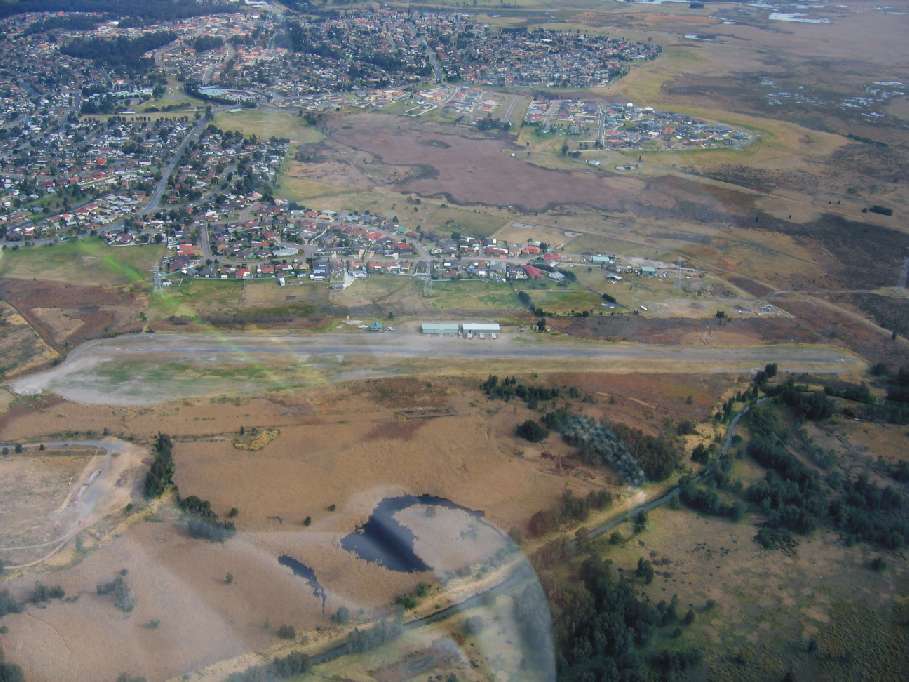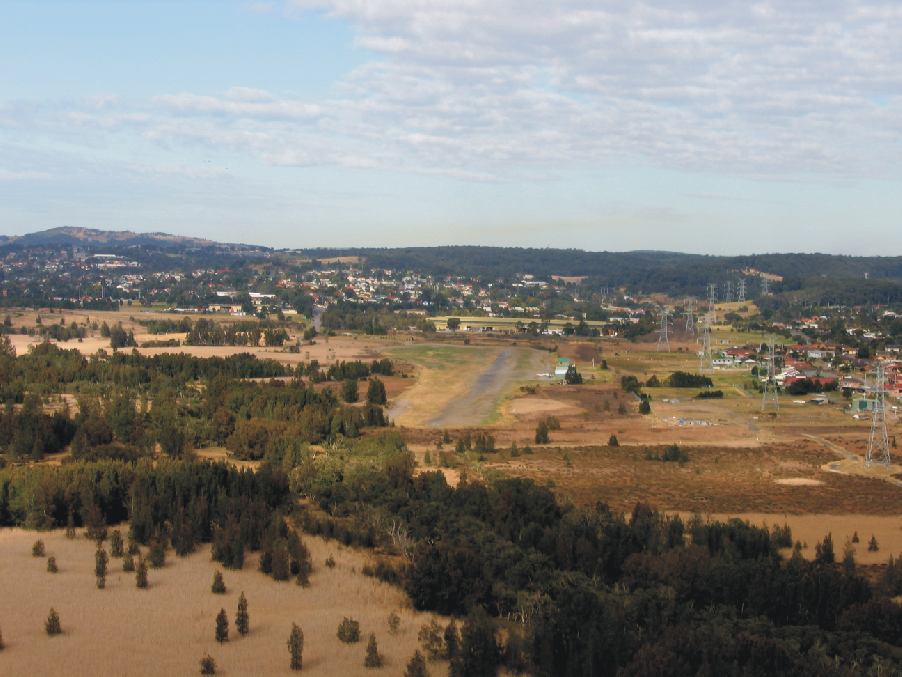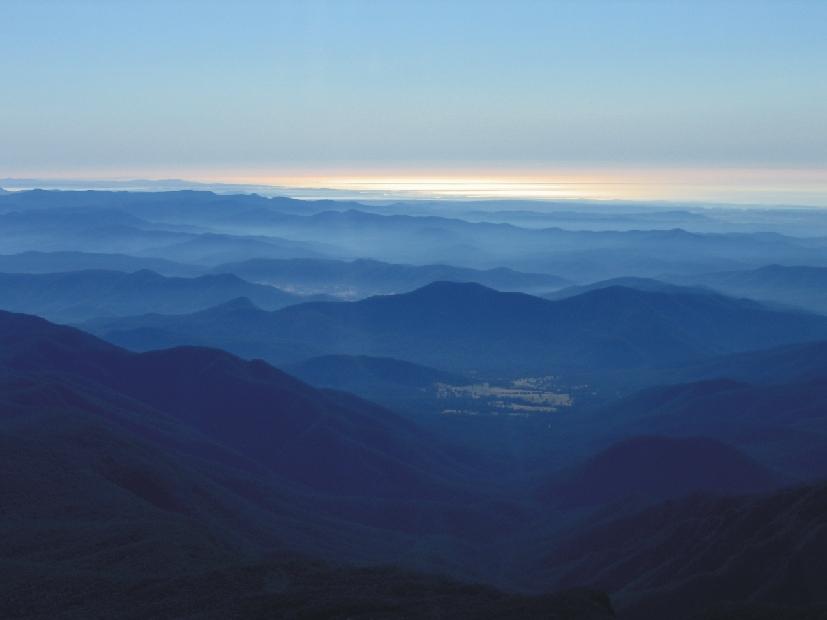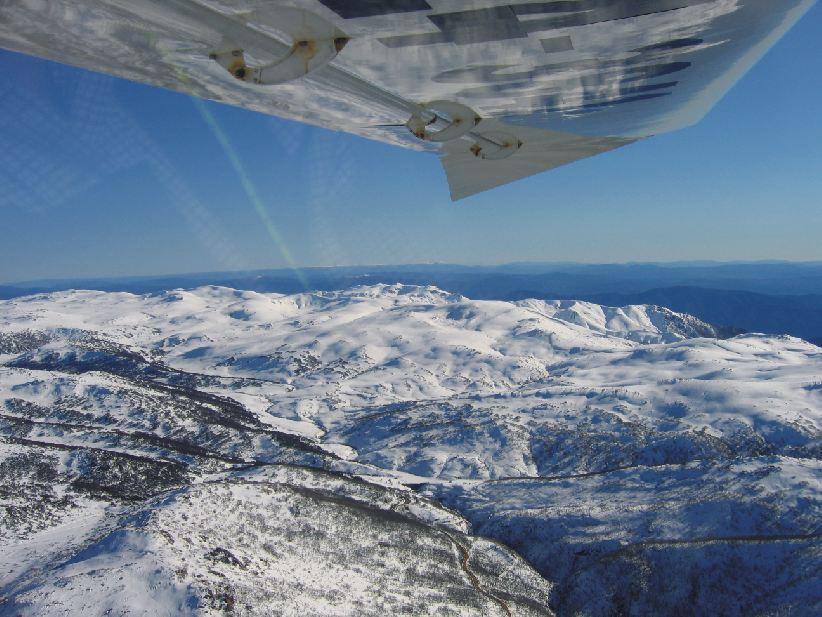-
Posts
662 -
Joined
-
Last visited
Content Type
Profiles
Forums
Gallery
Downloads
Blogs
Events
Store
Aircraft
Resources
Tutorials
Articles
Classifieds
Movies
Books
Community Map
Quizzes
Videos Directory
Posts posted by PaulN
-
-
Hi all,
I'm soon about to launch into some major repairs. Before doing so I have been fiddling with the engine checking all things very thoroughly so that at least the pointy end is in order.
One thing I discovered I'd like to share in the hope that it might save someone the trauma of sudden coolant loss while in flight. Our 912 ULS Rotax (ser num 4428278, factory date July 02) has done 483 hours.
The coolant hose on the port side runs from the expansion tank through the inlet manifold to the radiator. Where it passes through the manifold it has been rubbing through more than half the wall thickness. The hose on the starboard side running from the radiator to the pump runs through an intersection of struts on the engine mount frame and also rubbing through but not to the extent of the other side. Please take the time to check your own installation for wear. If nothing else, at least give thought to putting in place something to protect the hoses from wear.
Regards, Paul





-
Hi Geoff,
It's been a while, eh. That looks likefinal on rwy 23 Broken Hill again, with more view of town to the right this time.
Try this one. It's a bit obscure so will give a couple of clues. It'sbetween latitudes S 35 and 36(that should narrow it down), in a city suburb and is home to a great crew of friendly flyers.
Cheers, Paul
[ATTACH]1193[/ATTACH]
View over-top.
[ATTACH]1194[/ATTACH]
On final rwy 21
-
Let's not forget the satisfaction factor too. Owning your own gives the advantage ofkeeping it maintained the way you like, caring for it the way you want,keeping it at a location convenient to you, and knowing it's always available when you want it (when it's not "broke" :;)4:).
Just my $0.02 worth (that's all I can afford ...Ibought a plane).
Paul
-
Wow, any closer Nosmo and you wouldn't be talking about it.How about passing under another aircraft in the circuit doing in the opposite direction and missing by about 3-4 feet @ 120 knots each! That's about the closest I have come. -
Probably doesn't count but I had a near miss with the airfield fence at Polo Flat when first learning to land. New task, lots of stress, brain o'load... just after an awkward touch down the Allegro started running off to the left and to correct Ipushed the rudder pedals as if driving a billy cart
 . Thankfully my CFI was onto it very smartly. Can't remember if we lifted off over the fence or came about in line with the strip again. Have never forgotten that experience and have never made the mistake since, yet.
. Thankfully my CFI was onto it very smartly. Can't remember if we lifted off over the fence or came about in line with the strip again. Have never forgotten that experience and have never made the mistake since, yet.Paul
-
For what it's worth I have to agree with the author of the above article. However, landing to a full stop, back tracking and lining up again and again at a less than "lonely day at the airfield" day would more than likely lead to some congestion and annoyance to other users. Then again, the need for extra comms and lookoutcould lead to better habits in situational awareness for all concerned.
Any other thoughts?
Paul
-
Welcome aboard Mark. Good to have another flyer to share experiences and ideas. Hope you continue to enjoy the forum. I know you will find a wealth of knowledge and experience from other members.
Paul
-
Hi Cecil,
The question of preferred pic size and format is one for Ianmate. I'm sure he'll get onto it when he's back on deck and cleaned the sand from between his toes. Ben's pretty much got the idea but some of us use other photo editing tools than Photoshop. I use CorelDraw which allows me to physically size the pic in millimetres and then compress the file size on saving while retaining 300 dpi. Seems to work alright, most of the time
 .
.Cheers, Paul
-
That's great shot Darren. There's sure is some pretty speactacular scenery along the south coast.
-


 Very clever. It would help viewers if you are able to resize the pic a little smaller. Cheers, Paul
Very clever. It would help viewers if you are able to resize the pic a little smaller. Cheers, PaulThat's good gtblu, now we can see the pic as a whole :). Thanks PaulN
-
Hi Darren,
Doesn't the "Weather" tab at the top of this forum page already cater for this?
Paul PaulN
-
50kts and flying?

I so wish I could be there, sounds great. And would be a good opportunity to catch up with some of you guys. Next time
 .
.Have a good weekend.
Paul
-
That's crazy ... you'd have about 25 mins cruising in your old CT for that
 .
.Hi Ian, can't keep away can you? Enjoying the warmth and smilesin Qld? Hurry home, my brain's going fuzzy (oh alright, more fuzzy) with all this news reading stuff
 .
.Paul
PS I can tell you some stuff about Flydat too
 . PaulN
. PaulN -
Peter,
I sure hope tone doesn't include the many other high end($) ultralights already on <STRIKE>the</STRIKE> our register
 .
.Paul PaulN
-
Phew, you had me worried there for a second, thanks Nosmo. No, last time I looked the CT2K had no rust on board. That brown stuff you see around the hangers/hinges is staining from a corrosion inhibiter come lubricant.
-
-
-
Welcome to the gang Arthur, looking forward to your posts and build progress. Hey, with pics like that you should post some to the "Guess The Strip" thread. Don't you agree Geoff? Methinks all strips should have their names in big letters like Truro Flats ... makes the guessing easy.
Cheers, Paul
-
In scenario 1 you may have implied it but I didn't clearly see (must be the clouds
 ) a "Advise ATC of your situation and request help" - never ever be scared of doing this - they are there to help. ... No, this was neither implied nor overlooked. In my response I was thinking the resolution would be straight forward. I wonder just how much help ATC could be if they had neither a paint nor a xpdr signal ofmy a/c, I guess they would soon tell me. You're right in suggesting no-one should ever be afraid/shy to ask for help ... as someone else has said "better red than dead".You'll note I opted for ATC help that time over YSCB, and glad of it.
) a "Advise ATC of your situation and request help" - never ever be scared of doing this - they are there to help. ... No, this was neither implied nor overlooked. In my response I was thinking the resolution would be straight forward. I wonder just how much help ATC could be if they had neither a paint nor a xpdr signal ofmy a/c, I guess they would soon tell me. You're right in suggesting no-one should ever be afraid/shy to ask for help ... as someone else has said "better red than dead".You'll note I opted for ATC help that time over YSCB, and glad of it.Now you have thrown in thevariable of tracking over the cloud at say 45 degrees to the movement of the front. I confess, that Ididnot consider. Now the cloud your drawwill be moving at "x" knotsopposing my initial flight pathand flying into a h/wind mygnd speed will be less than airspeed. So by turning back my gnd speed will proportionally increase so that at say 120kt IAS I should beable to sight the cloud front fairly soon. However, if I'm still anxious I could pitch up to gain some height affording a better look around to find a way down (so long as I don't run into another wind layer opposing my flight path again).
Dang it, now you've got me worried.What am I missing??

BTW... you are relying entirely on your navigation skills of only time and track as you can't use land marks - you would severely question those skills after 10mins ... I question these all the time.

Paul
-
Those CT thingys sound pretty impressive. I want one ... one that flies that is.
-
OK, I'll stick my neck out and hopefully, if I get it wrong someone might offer a sensible correction from which we all may learn something.
Funny you should refer to total failure of electrics ... been there, done that as flying past and west of YSCB under the 3500' step, but thankfully no cloud. Due to faulty rectifier/regulator the electrics were being powered only by the battery. As it failedthe first thing to drop out was the Flydat, then came the GPS, however, by isolating all systems except radio we managed to keep this alive for remainder of the flight home. More than once Idid a little deepthinking about the function of ignition electrics for assurance that the Rotax would keep purring. This must have been obvious as my passenger with a worried lookhad to ask "Is everything OK?"
Now to your conundrum. Firstly, according to the AIP ENR 19.2, and from the good training we originally rec'd, it is inadvisable to continue a VFR flight above denser than SCT cloud (3 - 4 oktas). So, if I found myself in this situation I would be very conscious of keeping an eye to changes in cloud density (or rather the ability to take accurate fixes of ground features) around me ... situational awareness.
In response to ...
1. In the situation described above except you did get all your electrics working properly ... I might havefive options here, the first three assuming I have a working GPS on board.
(a) Being at 4000' and only 15 mins from destination I might select thatairport frequency in the hope of finding someone there to report the localmets. At say 120kts this places me 30nm out and at 4000' I should have aVHsignal. If lucky enough to get a reliably good report,then continue inbound track with reference to GPS while keeping clear of cloud; or
(b) Request ATC for a mets report ofmy destination and if available and satisfactory continue inbound track with reference to GPS while keeping clear of cloud; or
© Immediately turn 180 degrees to back track to known visibility, continue until safe to descend, set GPS for nearest alt airport (if no GPS get a fix from the map then locate the nearest alt airport) andput down to safety; or
(d) Immediately turn 180 degrees to back track to known visibility, continue until safe to descend, assuming xpdr on board and ATC has a paint ofmy a/c, seek assistance for directions to nearest alternative airport and put down to safety; or
(e)Immediately turn 180 degrees to back track to known visibility, continue until safe to descend, find a suitable location for a precautionary landing (airstrip, paddock, etc) and put down to safety.
Of these, the first three are illegal (no VFR over 8/8 cloud), however as I'm already there I can't be any more illegal if I continueto fly out ofthe present situation to known safe air. The real consideration here of course is whether it's smart to continue ... what if the electrics drop out again? Good airmanship??
2. In the situation described above ... If my electrics cannot be restored I have only one sensible option and that's (e) above.
3. In the situation described above and you suddenly see a very small opening that would hardly fit an aircraft in the cloud layer ahead of you? ... This barely needs asking. Don't even think about it, turn back andresort to(e) above.
4. In the situation described above and you luckily had installed an AH that is not electric so it is working perfectly ... This is a forum fundamentally for RA-Aus pilots and friends isn't it? Then flying in IMC conditions is not only illegal but stupid, even ifI'm smart enough to use an AH. Besides, haveI any idea for how far these conditions will persist? WillI be able to get down atmy destination, if indeedI can find it?
5. In the situation described above and you suddenly remember that when you were doing your flight planning the freezing level was 3,000ft. (this one will test you - if it is possible!) ... Being well above the cloud, even though the OAT may be minus 2 it is not likelyI will experience icing. And sometimes in a situation like thisone may find a temperature inversion puttingone at above freezing level temp. We often encounter this over the Snowies. WhatI won't want to do is fly near or in the cloud as icing then will be a very real risk. Again, resort to (e) above.
In all of these scenarios, the obvious thing to do when safely down is locate the cause of the electrics failure and rectify before further flight.
Just a note from another personal experience. Once, when flying from Newcastle to Cooma part ofmy NAIPS submittedflt planwas to climbto 6500' over Wollongong and track just OCTA past YSCB to awaypoint (Michelago) between Canberra and Cooma (106nm). As I would be tracking over tiger country I engaged Flight Following with ATC for this leg. The f/cast was for SCT cloud at 4500but half way along the leg the cloud beneath us began to thicken. So I tuned into YSCB ATIS to hear that local cloud over Canberra was SCT at 1500 and SCT at 2500 sounding hopeful for the cloud to thin out again soon. About then ATC handed us off to Canb App. On request Can App adv'd cloud o'cast over Canberra. I asked if they could check if any a/c near Cooma could give a report on cloud there. No good, however another a/c called in advising cloud over Goulburn was SCT. Using the mobile I called an aviator friend at Cooma and his advice was to divert as cloud was about 7/8 there. On request to Can App theycleared us for diversion to YGLB through controlled air and with permission to turn left and right as needed to negotiate cloud. So, yep ATC will help and quite happily. After taking on some late breakfast we continued on under the cloud to touch down safely at YCOM in time for lunch.
Paul
PS Sorry if this is too wordy but a good question is worth a thorough answer ... I only hope I'm not giving anyone a bum steer.
PaulN
-
It's interesting to see how many CT panels are on display here ... they must be popular, eh?
Go for it Ian, tell them it's your money and you want what you want

-
Tried one of them' date='mate bought one at Natfly it needs a amp you can hardly hear in the headset. [/quote'] Hi guys,
Geoff, I have one of these in the CT and it works just great w/out any additional amplifier ... v loud and clear. You might need to check your setup.
Paul PaulN
-
So how does this fit with CAO 95.55 para 5.2 (d)? ...
"An aircraft may be flown inside Class A, B, C & D airspace only if all of the following conditions are complied with; (and I quote part (d) only here)
(d) the aircraft is flown by the holder of a valid pilot licence (not being a student pilot licence):
(i) issued under part 5 of the Regulations, and
(ii) that allows the holder to fly in the controlled airspace."
I'm confused now
 ... one says yes and another says no. Who's right and who's wrong and why?
... one says yes and another says no. Who's right and who's wrong and why?










 . Thankfully my CFI was onto it very smartly. Can't remember if we lifted off over the fence or came about in line with the strip again. Have never forgotten that experience and have never made the mistake since, yet.
. Thankfully my CFI was onto it very smartly. Can't remember if we lifted off over the fence or came about in line with the strip again. Have never forgotten that experience and have never made the mistake since, yet. .
. .
. .
. . PaulN
. PaulN  .
.

 ) a "Advise ATC of your situation and request help" - never ever be scared of doing this - they are there to help. ... No, this was neither implied nor overlooked. In my response I was thinking the resolution would be straight forward. I wonder just how much help ATC could be if they had neither a paint nor a xpdr signal ofmy a/c, I guess they would soon tell me. You're right in suggesting no-one should ever be afraid/shy to ask for help ... as someone else has said "better red than dead".You'll note I opted for ATC help that time over YSCB, and glad of it.
) a "Advise ATC of your situation and request help" - never ever be scared of doing this - they are there to help. ... No, this was neither implied nor overlooked. In my response I was thinking the resolution would be straight forward. I wonder just how much help ATC could be if they had neither a paint nor a xpdr signal ofmy a/c, I guess they would soon tell me. You're right in suggesting no-one should ever be afraid/shy to ask for help ... as someone else has said "better red than dead".You'll note I opted for ATC help that time over YSCB, and glad of it.9.gif)
.gif)
Guess The Airstrip
in AUS/NZ General Discussion
Posted
Hi River,
That's right, one has to keep alert at all times. Not exactly out of the question, just make sure you get plenty of air before turning. There's a "green" corridor under those lines that should be followed rather than turn over the homes. The owners of the strip, to keep neighbour friendly, prefer all ops to be 03 t/off and 21 landing which is usually no problem as the predominant winds are from the west, straight through those power lines. Gets a bit tricky though when there's more than one plane in the area. Oh, what you can't see in the pic are a couple of 300ft masts just off to the east and another one behind me on that approach shot . Since taking these pics they have added a cross strip 18/36. The final leg begins almost over top of one of these masts and the rwy ends in the hangars.More so on thiswould one need to be alert on a missed approach ... power on and turn right well before the hangars or you could end up being fried. I have the honour of being the first to use this cross strip. As it turns out, just before they had finished picking up piles of stones they had been cleaning up ... made for an interesting landing roll,my firstslalom run with wings.
. Since taking these pics they have added a cross strip 18/36. The final leg begins almost over top of one of these masts and the rwy ends in the hangars.More so on thiswould one need to be alert on a missed approach ... power on and turn right well before the hangars or you could end up being fried. I have the honour of being the first to use this cross strip. As it turns out, just before they had finished picking up piles of stones they had been cleaning up ... made for an interesting landing roll,my firstslalom run with wings.
One soon learns the meaning of situational awareness here.
Paul
Oops, there's a few more clues. PaulN